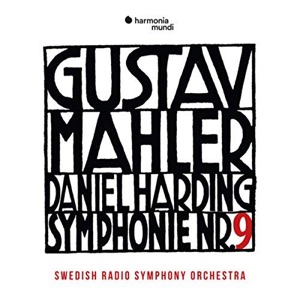On evidence here, Daniel Harding has become a Mahler conductor to be reckoned with. This is a very pleasant surprise, especially in light of his ghastly Mahler Fourth of a few years ago. That was a mess largely because of his decision to play the work with a chamber orchestra, and the Swedish Radio Symphony Orchestra certainly isn’t that. Harding has them displaying no mean level of virtuosity, especially in the two inner movements. The first scherzo features a wealth of color, with the woodwinds making the most of the opportunity to characterize their opening, rustic Ländler in particular. The Rondo: Burleske, on the other hand, is fast, aptly mean and nasty, but also amazingly transparent, its contrapuntal lines amazingly well balanced.
Of course, no one buys a Mahler Ninth for the inner movements. Harding plays the opening Andante a bit cooly, the climaxes slightly held back. There’s the same clarity of texture we’ll encounter later, but you wish that he’d drive the music just a bit harder. Also, he uses bell plates after the last, major collapse, and that’s a mistake. Their pitch is almost imperceptible, even if the octave they play in is (arguably) correct. The finale, however, is magnificent: perfectly paced and flowing. At twenty-six minutes you might think it’s on the slow side, but it doesn’t sound that way. The “frozen time” episodes are genuinely hypnotic, dynamics carefully observed, and the coda has a hushed intensity that’s mesmerizing. You can get away with a slightly underplayed opening movement if you nail the finale, and Harding does just that.
With vivid, natural engineering, a bit shy in the bass, this performance might not be perfect, but it’s definitely a contender. I never thought I’d find myself saying that about a Harding Mahler release, but I’m happy to be proven wrong.
































